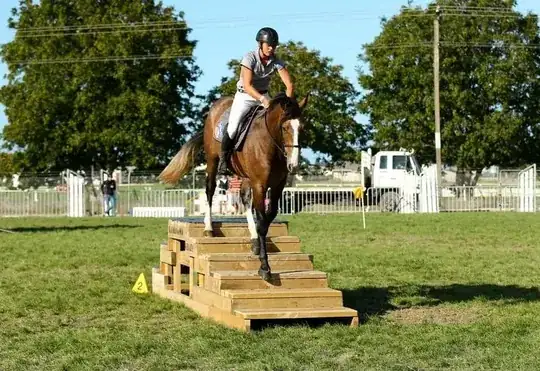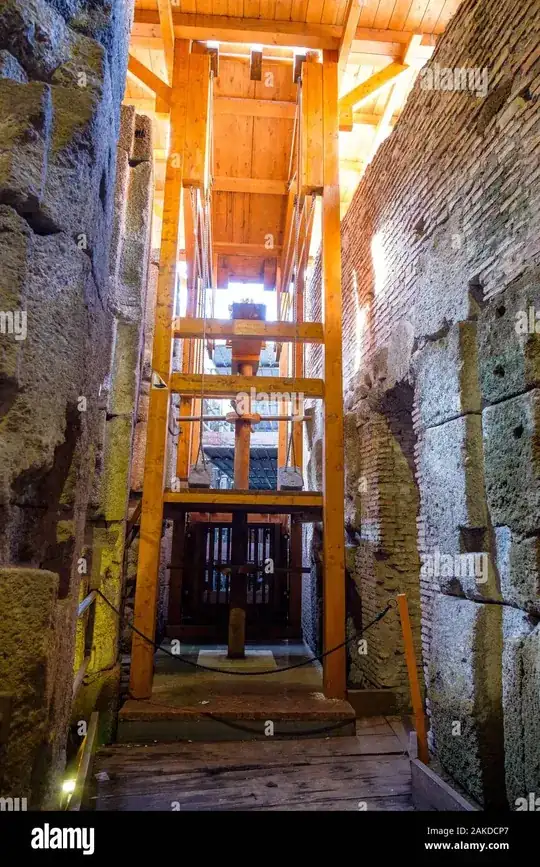No spiral staircases
Spiral staircases, and firefighter's poles were developed not to prevent horses from going up stairs, but prevent them getting stuck.
Often, when the firemen cooked meals on the second floor, curious horses would ascend the stairs into the living quarters; as horses typically don't descend stairs, they would then be stuck there.
To solve this issue, firehouses began installing narrow spiral staircases that the animals couldn’t access.
This leads me on to this:
Minimum turning spaces, and risers
This PDF (download link) from the British Horse Society about horses crossing bridges is particularly insightful
Consideration should be given to the widths needed to safely pass other
users and if a horse should need to be turned while on the steps. Turning is likely to require a 3m x 3m area for safety. The ideal is therefore 2m wide with frequent passing or turning places but much will depend on the site, its level or use and locality.
It also goes into detail about maximum, minimum riser height:
Riser height optimum 150mm at sites well used by all abilities. If insufficient space is available to gain required height then alternate risers may be increased as follows:
• Maximum 200mm for maximum of three consecutive risers
• Maximum 300mm for maximum of two consecutive risers
• Maximum height 450mm at remote sites and only with a 2m tread below the 450mm riser
This is all for mounted horses, and mostly outdoors. The most salient point is the turning space. What happens when your centaur wants to turn around part way up the stairs?
Riser height is likely less of an issue, but still worth considering.
The document also mentions that at 45 degree angle slopes, horses tend to angle themselves sideways for stability. A sufficiently steep set of steps (ones ignoring the above advice) might cause a traffic jam as the centaurs try to balance by turning sideways or at least stall fighting those instincts.
Front Heavy
Another thing to consider is that a centaur is much more front heavy than a regular horse:

That is, when going down an incline or set of steps, the center of gravity will shift towards the front of the centaur, potentially putting it off balance.
In summary, the steps might need to be much longer than they would otherwise (2m or just over 6ft), but the rise wouldn't need to be too drastically different (150mm is ~1 ft), but that's the minimum for horses. Centaurs may be able to handle shorter steps, less long steps.
The maximum incline/decline should also be considered as mentioned above, to prevent traffic jams on less than ideal staircases.








